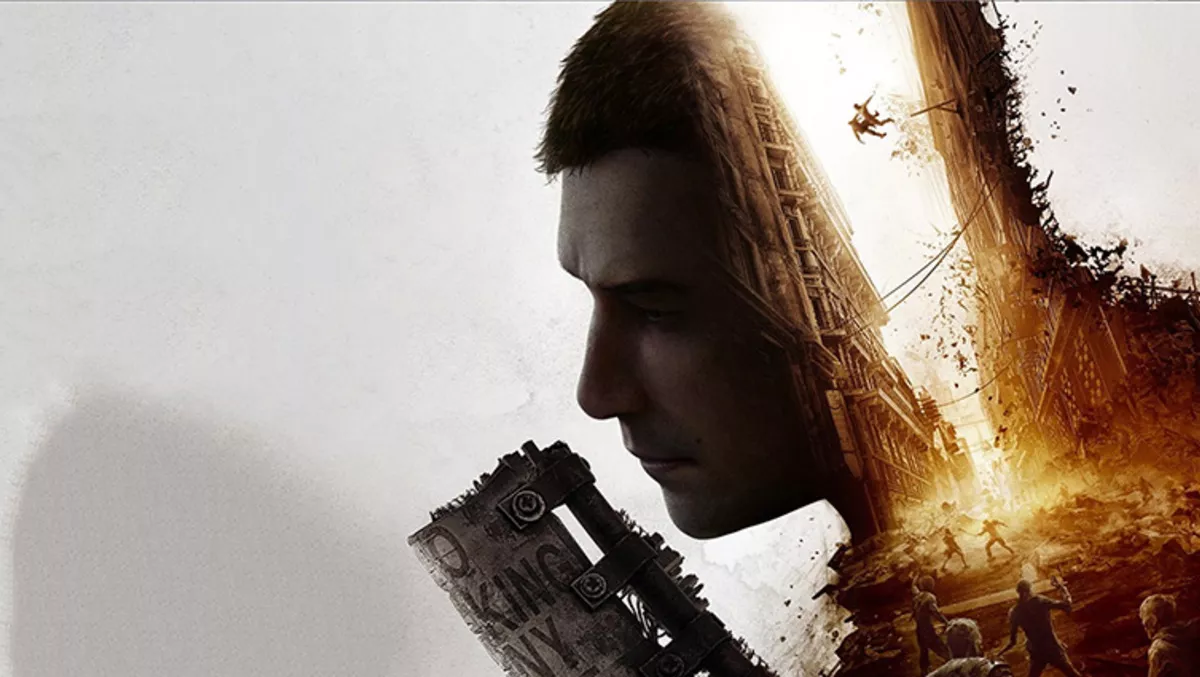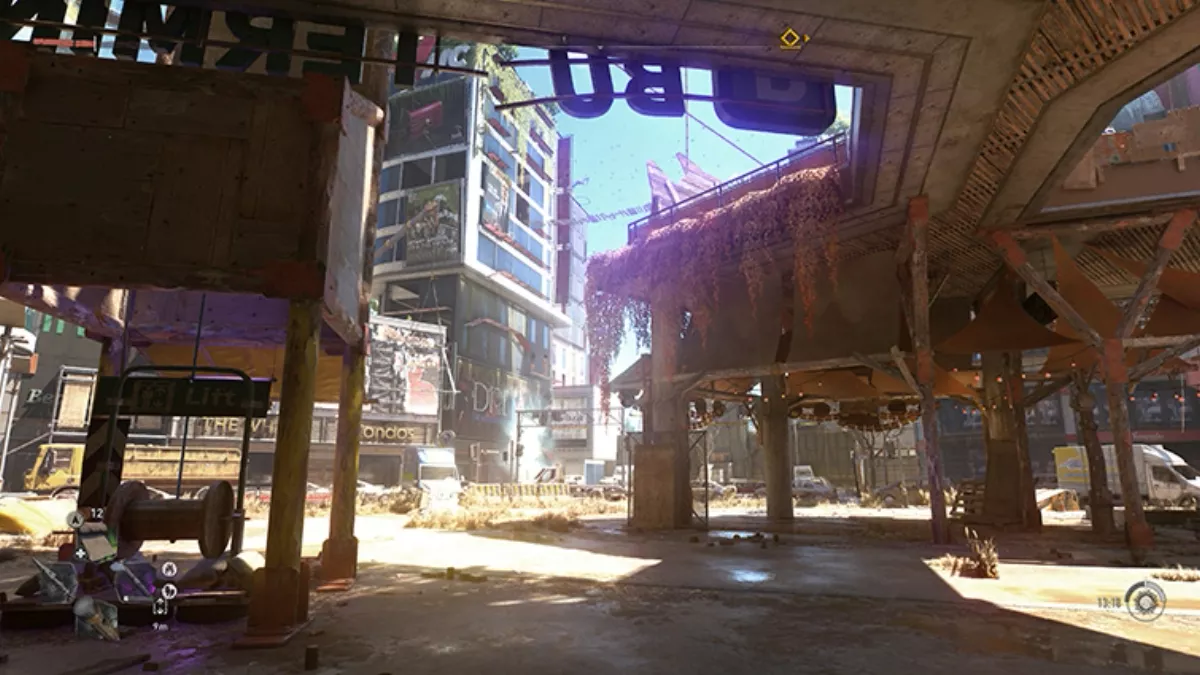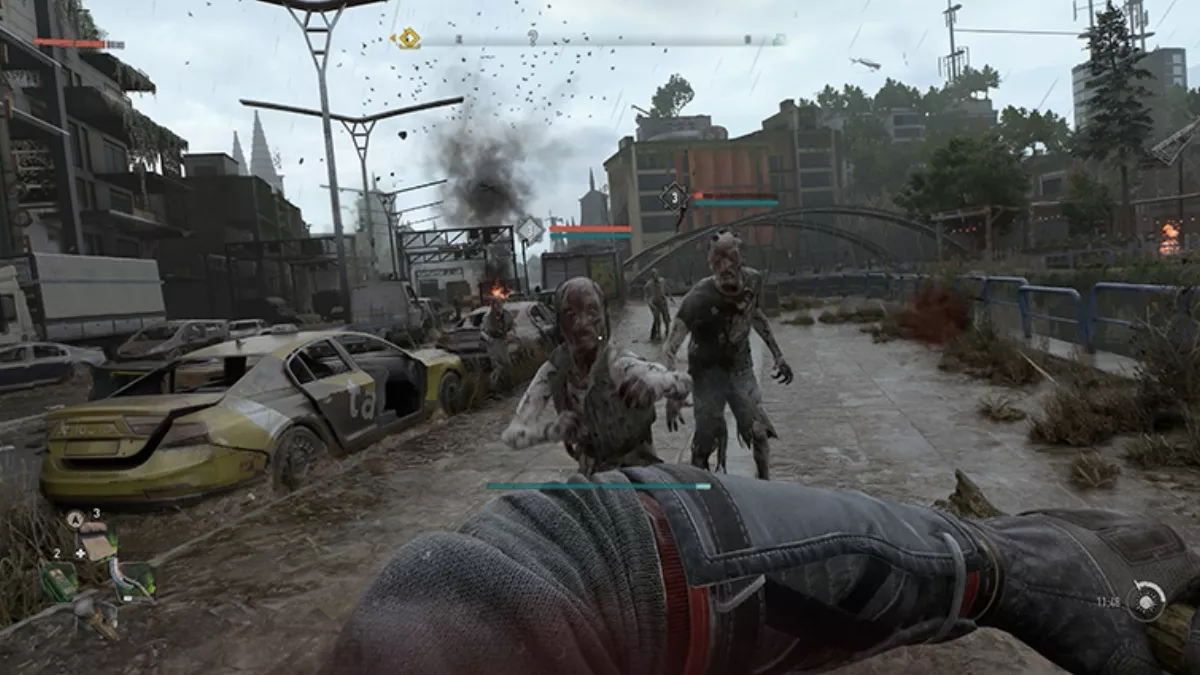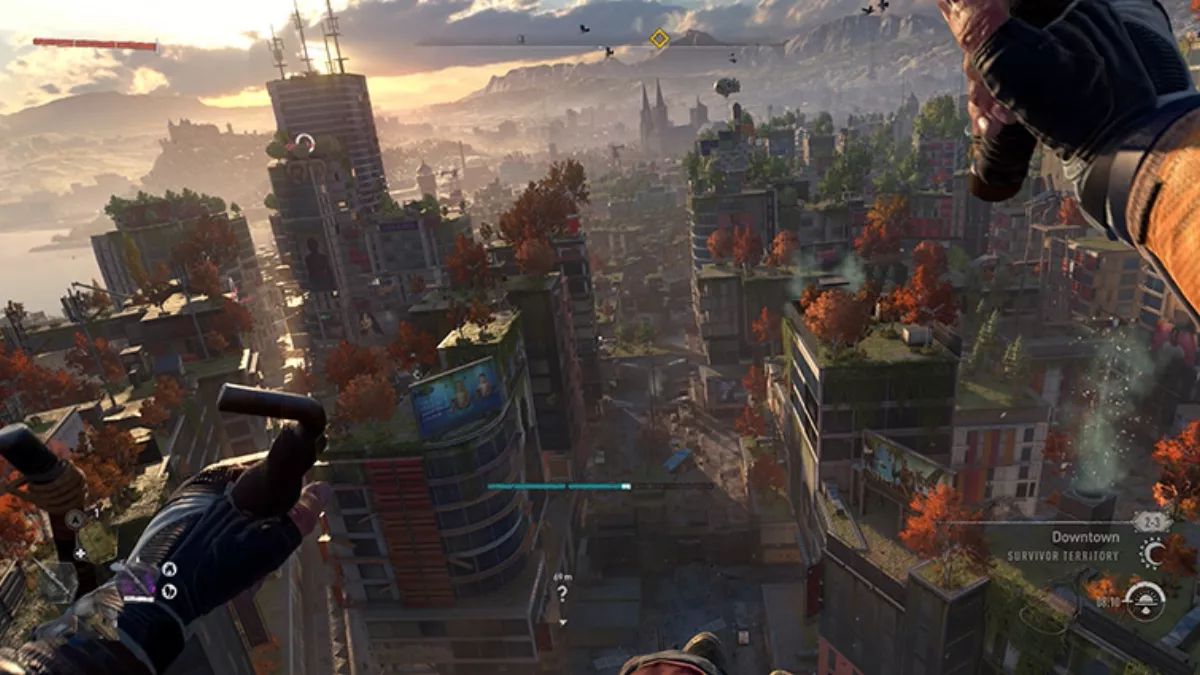
Game review: Dying Light 2: Stay Human (PC)
Techland's long-awaited sequel to their 2015 zombie-killing parkour role-playing game, Dying Light 2: Stay Human, is now available.
Set 22 years after the first game, Dying Light 2: Stay Human has players take on the role of Aiden Caldwell, a Pilgrim, one of the lone survivors of a deadly zombie plague crazy enough to travel between settlements.
The game starts as Aiden seeks to enter the walled city of Villedor, one of the last cities on Earth, in search of his sister.
Aiden and his sister, Mia, were experimented on as children during the early stages of the zombie outbreak. The results of this experimentation may be why Aiden has been able to survive so long on his own.
The city of Villedor is amazingly detailed and full of characters to interact with. There's a lot more foliage than in the first game, given that nature has started to reclaim the city. The survivors have turned to farming and more sustainable ways of living, rather than just scavenging.
The game is played entirely in first-person, never once breaking from that view. Jumping, falling, swinging, and fighting remain from the protagonist's point of view. This gives players an immersive, sometimes exhilarating, and quite brutal perspective.
Visually, it's an amazing game. The environmental effects during rainstorms give the game a photo-real look (that it doesn't quite achieve when the sun is out). The characters are expertly modelled with facial animation looking very realistic. The cream, though, is the camera animation from Aiden's POV which brings an unprecedented level of realism to the game.
Dying Light 2 on PC features ray-traced lighting and shadows, enough to put your GPU through its paces. Maxed out at 4K HDR running the game with an RTX 3090 I was looking at 30 frames per second. Turning on Nvidia's deep-learning super-sampling (DLSS) the game switches to a more acceptable 60 fps. Dropping the resolution to 2560 x 1440 and the frame rate starts breaking the 100 frames-per-second barrier.
The developer, Techland, has not been hiding the specs required to play it game, but the above puts things into perspective. It also highlights the huge benefit that Nvidia's DLSS brings to the table, even with high-end GPUs. DLSS 2.0 allows for crisp-looking graphics even on the performance setting. Whereas the quality setting still gives the game a decent performance boost. The balanced setting gives the best of both worlds.

The PC version of the game has plenty of graphics options to fine-tune the performance. Whilst ray-tracing is most definitely in the nice-to-have category, a bit of time tweaking the settings can increase performance with little detriment to the visuals for lower-spec machines.
The amazing visual fidelity is matched by equally formidable gameplay that introduces itself in a considered if, at times, slow pace. At the beginning of the game, Aiden's abilities are pretty poor, making traversing the city and fighting opponents difficult and a bit of a chore. He can't jump far, can't climb without fast losing stamina. or strike opponents with any fancy moves.
It was only after abandoning the main mission thread and just messing about in the city that I started unlocking Aiden's abilities, which makes things interesting. Whilst you can gun it through the main missions, it's completing side missions and random encounters that will give you the abilities that'll make things that much easier. In spending a fair amount of time just completing side missions and exploring, I managed to boost Aiden's abilities to such an extent that he became a formidable fighter and parkour expert.
Techland has honed the parkour even more since the first game, making it fluid and a lot of fun. Running across rooftops for the most part avoids the zombies in the streets below during daylight.
At night zombies tend to be everywhere, including volatiles- impossible to kill zombies that will chase you until you can get to safety. I found nighttime wasn't quite as dangerous as in the first game, with some places safer to explore during darkness.
As the game opens up, the downtown area is full of high-rise buildings to explore and navigate across. Pully systems zip players up to the top of buildings and the parachute received later in the game allows for some aerial fun gliding across the city. Strategically positioned fires can be used as an updraught, propelling players high into the sky. Unlocking the grapple gives Aiden some serious Spider-Man vibes, allowing him to swing from buildings (and fall from great heights). The impressive climbs and leaping across the tops of skyscrapers are not for the faint-hearted.
The game has two skill trees for Aiden's abilities, combat, and parkour. Feats involving these disciplines earn experience points for one or both, rewarding upgrade points. As well as these two skill trees, finding special crates, left by the clandestine GRE organisation from the first game, contain GRE inhibitors. Perks from GRE inhibitors can be assigned to either health or stamina, to reduce damage taken from falling or in combat, or increase Aiden's ability to climb and fight without getting tired.

In time these upgrades will have Aiden running, jumping, climbing, and fighting like a superhero. This is when the game hits its stride and starts to shine, rewarding players for their patience as they learned the ropes. Leaping across roofs and pirouetting around opponents is an absolute delight.
As well as attribute upgrades there is an arsenal of weapons, accessories, and clothing that can be purchased or scavenged. Weapons can be modified using materials gathered in the field to create some brutal bits of equipment, whereas clothing provides armour and attribute perks.
The city is populated by competing factions. At certain points the game does ask players to make faction choices that affect the missions that are offered. Players can side with either the Peacekeepers (PKs) or the survivors. The renegades are at war with both the other factions and attack on sight. The streets, of course, are also littered with zombies.
There are strategic locations thought out the city, one per district. Liberating these locations allows the player to choose which faction gains control of the district. PKs arm cars with trips in the districts they control, whereas survivors tend to place infrastructure that aids parkour, like zip lines and bounce mats. There are also windmills scattered across the city that, when activated, unlock new settlements and trading hubs.
The game feels a lot more structured than its predecessor. Despite being a massive game with loads of side-missions and things to do, I never felt that overwhelming feeling that you sometimes get when faced with vast open-world environments.

As with the first game, the game can be played online with up to four other players. As well as a server browser to find multiplayer games, there's a pretty cool, drop-in-drop-out casual multiplayer mode as well.
Dying Light 2: Stay Human is a great game. It's a game that plays its cards close to its chest at the start and makes you work for your fun, but once you've unlocked a few perks, it really comes into its own. The setting is fantastic and fun to explore, the plot is engaging, and the side missions enticing.
Traversing the city, especially with the parachute and grapple is exhilarating. I found it an extremely difficult game to put down. If you are a fan of the first game or like zombie games in general or even parkour games like Mirror's Edge, you are going to have a lot of fun with Dying Light 2: Stay Human.
Dying Light 2: Stay Human is out now on Windows PC, Xbox One, Xbox Series X|S, PlayStation 4, and PlayStation 5. A copy of the game for PC was provided by the publisher for review.
Verdict: 9/10


